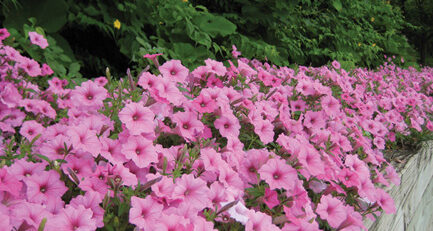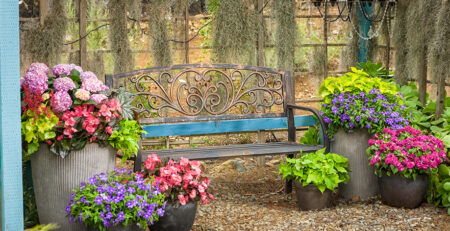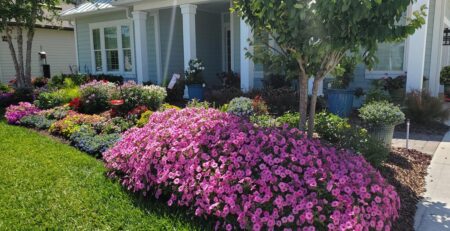Top 8 Tips for Buying and Taking Care of Indoor Plants
Most people love the idea of having indoor plants at home. Of course, anyone can buy indoor plants, but most of us are not sure what to do when it comes to taking care of them properly.
Nunan’s Garden Center has compiled the ultimate guide for how to buy indoor plants or garden flowers and how to ensure that they thrive.
Nunan’s Garden Center offers the best variety of indoor plants and garden flowers to transfer love and care from our garden to yours. Call us now at 978-352-8172 .
-
Let there be light.
- Light coming from the sun is the ultimate source of energy for life on earth—and it is one of the most vital factors of survival for indoor plants.
- The light determines the growth of indoor plants and is also responsible for defining their water usage frequency. So, it’s essential to check the label before you buy indoor plants.
- Still not sure which plant to choose? Find the perfect plants for your home through our extensive inventory of garden flowers and other indoor plants. Please use our Plant finder to learn more.
-
Read the room.
- A vital part of survival for indoor plants is the proper placement. Since it is a living, breathing organism, your dinner table or kitchen counter may not be the best spot. The position of the pot should correspond with the specific needs of the plant.
- If a plant label says it needs the full sun, it should be located somewhere that it will receive direct sunlight all day. Indoor plants like cactus succulents fall under this category. Therefore, it is advisable to think of a suitable place before you go buy indoor plants that need uninterrupted sunlight throughout the day.
- Some plant labels mention bright indirect light. This one may be a little trickier to understand since the source of bright indirect light is the sky, not the sun. Thus, indoor plants that need indirect illumination should be placed somewhere they can see the sky, but not the sun.
-
Go with the flow.
- After lights and location, it’s time we move on to irrigation. Indoor plants need water just as much as they need sunlight. So just watering them once or twice a week won’t guarantee growth and survival.
- The quantity of water needed by indoor plants is dependent on the soil dryness in the pot. In other words, when the soil goes dry, it is time to water the plants. Sprinkling a few drops won’t work either; you need to give the ground a good soaking. The roots will absorb this much-needed water as they grow.
- To determine the exact volume of water, you need to imagine soil like a sponge. When dried out, it gets hard and crusty; pretty much useless for indoor plants. Hence, figuring out the suitable amount of water without flooding the pot is essential.

- Nunan Florist & Greenhouses strive to continue a 100-year-old tradition of providing exceptional quality garden flowers and indoor plants to our customers. Learn more about us here.
-
Be down to Earth.
- The structure, composition, and function of the soil are worth learning before you choose to buy indoor plants. You don’t need to enroll in a science class just yet; you should just know how different natural elements work together in the soil to facilitate growth in plants.
- In nature, soil is constantly aerated and rejuvenated by microorganisms, worms, and natural environmental forces. This process helps the plant to take root and grow with an ample oxygen-rich nutrient and water supply.
- Similarly, with indoor plants in a pot, you need to manually aerate the soil for easy movement of oxygen and water to the roots. Something as simple as chopsticks could do the trick! Just poke some holes. The extra space will help keep the soil light and will allow roots some room to grow.
-
Looks can be deceiving.
- If you are someone who prefers the dark and spends a lot of time in the basement, then you should buy indoor plants with a low light label. But, fair warning, if you think low light means no light, you’re in for a surprise.
- We have all seen indoor plants that seem like they can survive in the basement with almost non-existent light. But such plants merely look all right while they starve for life-giving light.
- These low-light plants may not need the direct sun, but they still need a little. Snake plants, ZZ plants, etc., are great options if you’re looking to buy indoor plants that can survive in low light conditions.
-
Live a green corporate life.
- Low-light indoor plants are also excellent choices for your desk at work since they don’t need much watering and can survive in bone dry soil for long periods. So now you won’t need to worry about your plants dying out while you’re on vacation.
- Garden flowers can add unique colors of greenery to your bland cubicle on regular working days, and you can leave them near a window on the weekends for some light sunbathing.
- You can also choose our Interior Plantscaping Services to create a more inviting environment in your office or home using low-maintenance garden flowers and indoor plants. Nunan’s Interior Plant Care Service can help!
-
Keep your pets away.
- Pets and pots of indoor plants don’t go hand in hand very often. While some pets tend to chew up and destroy garden flowers, those same garden flowers can be toxic to them. Research is the only great strategy to keep a safe household before you buy indoor plants.
- All low-light plants are a little bit toxic. However, it doesn’t mean that it’s a death sentence for your pets. Such indoor plants can only be harmful to other living beings when ingested in large amounts. Most pets can easily recognize the horrible taste of toxins in the first bite and will not continue to eat it.
- Sago Palm is highly toxic and dangerous for pets. It may look cute like a pinecone, but it a terrible choice of indoor plants for pet owners. On the other hand, the Spider plant is an entirely safe alternative as it is a great air purifier.
- Other pet-safe indoor plants include the Ponytail Palm, a plant with leaves that look like cat toys that are great for hanging around the house. Hanging air plants are entirely safe from pets, and they add a natural decor element to your home.

-
Maintain long-lasting freshness.
- Keeping the fresh look and growth maintained is a significant problem people face after they buy indoor plants. Sure, they all look so pristine in their nursery or greenhouses, but that’s because those plants have people taking care of them around the hour in the best possible conditions.
Once you buy indoor plants and bring them home, they start yellowing or showing signs of withering. Even if the plants lose their fresh appearance, it doesn’t necessarily mean they are dying; it is better to think of it as a reminder that nothing lasts forever.
Please read our blog to find more tips and tricks to take better care of your indoor plants and garden flowers.
In a nutshell, the best approach to buying and caring for indoor plants is to understand the conditions you can realistically provide, buy indoor plants that can survive in those conditions, and then let nature run its course.
Get in touch with Nunan’s Florist & Greenhouses anytime to discover your perfect plant buddy. Contact us.










